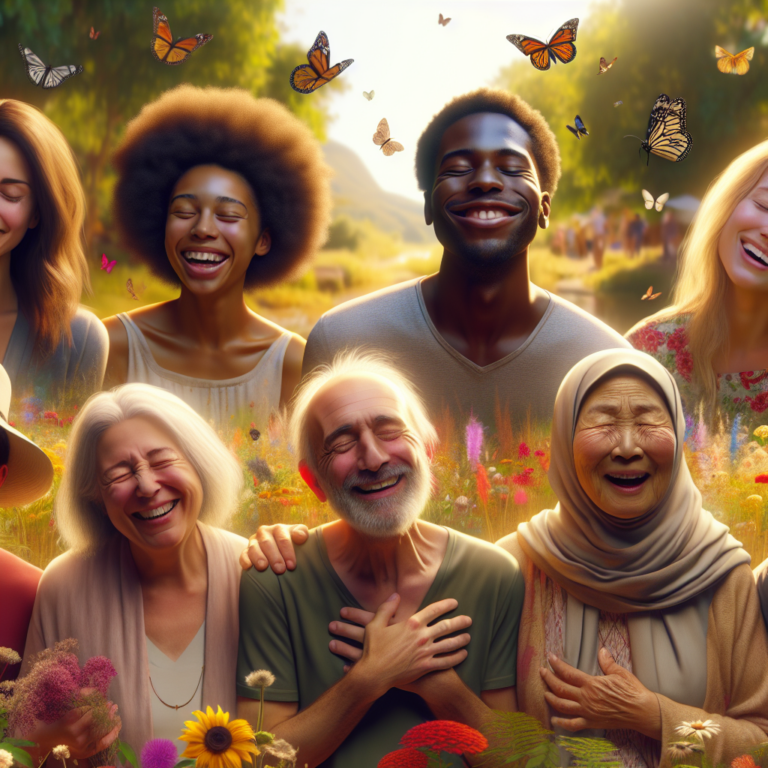
In a world saturated with perfectly curated images and AI-enhanced aesthetics, it’s easy to feel like we’re never enough. Social media and societal standards bombard us with an unattainable ideal, often masked behind layers of digital enhancement that distort our perception of reality. These body filters, subtly applied even in live streams, promote a homogenized view of beauty that few can naturally achieve, fueling insecurity and the relentless pursuit of an ever-shifting ideal. But what if we challenged this narrative? What if we found beauty in our natural selves and celebrated the diverse forms that life takes? In this blog, we explore the damaging impacts of filtered beauty, the historical evolution of body ideals, and how we can empower ourselves to break free from societal pressures by embracing our authentic selves.
The Allure and Danger of Body Filters
The allure of social media’s picture-perfect world can be enticing. With just a swipe or a tap, we access a universe where every face is symmetrical, every body is sculped to perfection, and every blemish miraculously vanishes. But behind these polished images lie meticulously applied filters and retouches, often so seamlessly integrated that we might not even notice them. This discrepancy between virtual and actual realities can erode our self-esteem, particularly when we inadvertently compare our natural selves to these altered standards.
Body filters, prevalent in live streams and social media posts, project an idealized body type—one that is impossibly consistent across various cultures and epochs. This “ideal” often consists of attributes like a tiny waist, pronounced hips, and flawless skin—all achieved without any traces of anatomical normalcy such as cellulite or stretch marks. The chorus of society, underpinned by these AI-generated images, perpetuates a narrow definition of beauty. The reinforcement of these stereotypical aesthetics can lead to a cycle of dissatisfaction as we strive to emulate an unrealistic standard.
Historical Context of Beauty Ideals
This cycle is not just rooted in modern technology. Historically, societal ideals of beauty have been fluid, changing with the cultural and economic climates. In times of scarcity, a fuller figure was often celebrated as it signified wealth and abundance. In contrast, periods that prized slenderness reflected times when the elite sought to differentiate themselves from a well-fed populace. These trends exemplify how societal values shape our perceptions of beauty, often highlighting what is unattainable at the time.
Modern Influences and Their Impact
Despite knowing these historical shifts, we remain entrapped by modern aesthetics, swayed by celebrities and influencers who set contemporary beauty standards. The investment in products and services promising to morph us into these ideals is massive, fueling an industry that profits off our insecurities. Products like waist trainers, detox teas, and other quick fixes are sold as panaceas for achieving the “perfect” body. The dissatisfaction with our natural selves, sparked by the filtered perfection we see online, leads us to purchase these items in hopes of transforming our bodies.
Mental Health and the Quest for Perfection
This relentless pursuit can have dire consequences on mental health. The obsession with achieving a digitally enhanced appearance can lead to body dysmorphia, anxiety, and eating disorders. The story of many who have fallen into this trap is a testament to the emotionally and financially taxing cycle fueled by the desire to conform to these standards. The societal pressure to fit within a specific mold can overshadow the innate beauty and functionality of our bodies—our vessels for life and experience.
Strategies for Embracing Authentic Beauty
But there is hope. By actively diversifying what we see on our social media feeds, we can begin to counter the effects of uniform beauty standards. Intentionally following creators and influencers who celebrate diverse body types, skin tones, and hair textures can reshape our perception of beauty. Representation matters, and exposing ourselves to a broader spectrum of appearances can remind us of the beauty in our uniqueness.
Moreover, practicing self-affirmation can help reshape our internal narrative. Placing positive notes or affirmations on mirrors can shift our focus away from perceived imperfections to qualities we appreciate about ourselves. While it may not feel genuine initially, consistent reinforcement can lead to a gradual acceptance and celebration of one’s natural beauty.
Redefining Beauty on Our Own Terms
The journey to embracing our authentic selves also involves questioning the motives of the beauty industry. Why are certain products or procedures deemed necessary? Are they truly adding value to our lives, or are they perpetuating a cycle of dissatisfaction? By critically evaluating these influences, we can make conscious choices that align with our values rather than succumbing to external pressures.
Radically accepting and loving ourselves for who we are is a bold stance against the homogenized beauty ideals propagated by society. When we recognize the countless variables that led to our existence, the convergence of diverse ancestries and experiences, we begin to see the uniqueness of our beauty. Understanding that societal standards are transient and ever-changing can liberate us from the pursuit of a fleeting ideal.
Embracing the True Essence of Beauty
Ultimately, the most enduring beauty lies in authenticity and self-love. By acknowledging and embracing our imperfections, we reclaim the narrative of what it means to be beautiful. Let us celebrate the diversity inherent in humanity and redefine beauty as an inclusive spectrum of individuality. In doing so, we liberate ourselves from the confines of filtered perfection and step into a more authentic and fulfilling existence.
Social media’s filtered ideals distort reality, pushing unattainable body standards that fuel dissatisfaction. Embrace your unique beauty by breaking free from these traps.